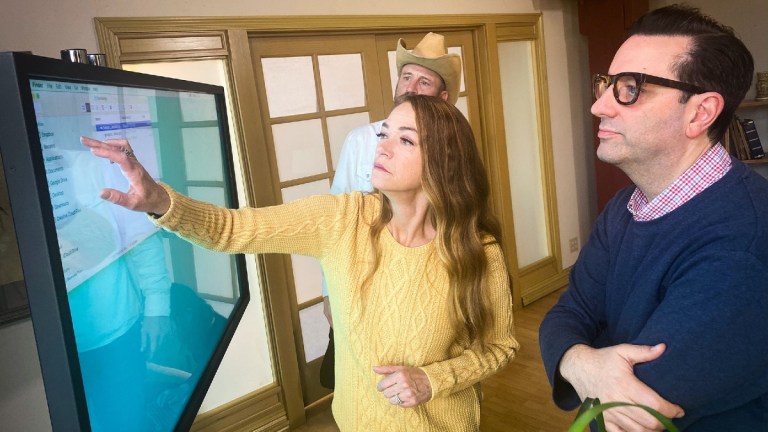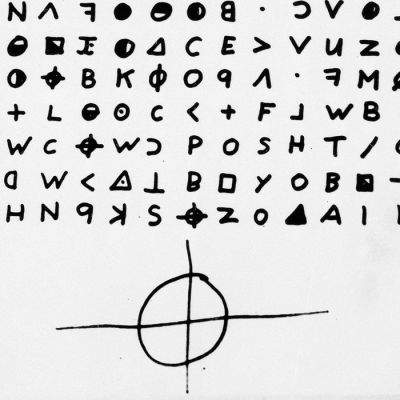The Jane Doe Murders Review: Compassionate True Crime Doc Provides Closure
Oxygen’s true crime special The Jane Doe Murders gives one Jane Doe a name to bring closure to a case no one saw coming.

This The Jane Doe Murders review contains spoilers.
The Jane Doe Murders is another in a long line of true crime breakdown procedurals. However, it showcases something rare but obvious in the majority of these video journalism projects. At the heart of the case which is probed on Oxygen’s two-hour forensic investigation special is a personal story. The victim is neither famous nor infamous. She wasn’t at the center of a nationwide manhunt. Parents weren’t told to check on their kids at 10 o’clock because of her. Her case went unsolved without so much as a name to identify her. The series points out there are nearly 40,000 open cases in the U.S. where the victim of a violent crime is unidentified. The victims are called Jane or John Doe. They become cold cases. The Jane Doe Murders brings warmth as well as closure.
It’s not the most exciting thing Oxygen has brought us. It fills another need. One which viewers might not even know is out there. Finding answers to crimes we never heard about, and victims who’ve been lost to even the most local of history. The highlighted case has baffled local law enforcement for 23 years. A woman was left for dead in the remote woods of Polk County, Oregon. All that is left, after animals scavenged the body and the elements ravaged the tissue, is the skeleton.
The special is anchored by forensic specialist Yolanda McClary, who worked for the Las Vegas Metropolitan Police Department for 26 years. Sixteen of those years were spent in the crime lab. Picture her as a mad scientist with a badge. What really gets her angry are the families who get cheated out of their grieving process because the official process fails. The Jane Doe Murders is a procedural, but finds a way to reassemble the process in a new way.
The Jane Doe Murders is almost the inverse of most true crime documentary shows. The majority of these projects start with a victim and hunt for a killer, either because the crime has been unsolved or because someone else was charged and wrongfully convicted of it. Here we don’t actually know if there is even a crime. The documents in the Polk County Sheriff’s office lists her only as a “Suspicious Death.” The only thing the officers have to giver McClary when the investigation begins is a set of 23-year-old bones. Bones don’t have any soft tissue which can determine a knife wound. These particular bones have no signs of physical trauma to determine a bullet wound.
What the bones do show is Jane Doe had been a mother. There are certain ligatures on the pelvis. This puts fire into the search because now McClary imagines the woman’s child looking for a missing parent. The investigators get no leads based on a forensic anthropologist’s sketch of the dead woman. McClary moves to DNA testing and databases. The process is fleetingly fascinating because it is the best example of how she has to create something from nothing.
McClary, who also assisted investigator Paul Holes on the true crime shows The DNA of Murder and Cold Justice, kept in contact with her hometown team of trusted genealogists, and their access to technology, like DNA databases. Certified genealogist Charles McGee explains forensic genetic genealogy. The team base their findings on people who share a percentage of their DNA with Jane Doe. They begin with GEDmatch, a genealogy database used by law enforcement to compare unidentified remains with recorded data.
The sequence starts by making it look like a search for a needle in a haystack. But the experts working the dials quickly get thousands of partial matches. This excites them because they get to the work of breaking down the data to more accessible information. They go through marriage certificates, adoption papers, and finally actually begin talking to people who might actually have first-hand information.
Once the clues are put together, and a name replaces Jane Doe, the family has to be told. In this particular case the team has put enough together to be assured of their findings, and are looking for confirmation. This comes when the special is about a third of the way through, but the twist is now the family has to deal with, not only a grief, but disappointment.
After the initial connection is confirmed, the family history plays out with more detail than most people get on Ancestry.com. The DNA matchups veer through an alcoholic marriage, an accident reported in a local paper, adoption, and a crime. The connective tissue is very strong. The team fills in gaps with other family members. One of the original investigating sheriff’s officers remarks on how much you can learn from a third cousin. He is visibly surprised.
The special inadvertently showcases how investigators in cases like these need connections as much as those affected by the loss. The forensics team is happy to share information they have because they are hungry for the information which comes in from the family members they track down. Each lead fills in missing details until they actually get to people who remember the victim as a person. People who can give very specific and personal details. We learn Jane Doe, Kathie, once she’s been identified, could sing. Other than that, she didn’t live a fairy tale life. She had a short-lived marriage, which lasted under a year.
Once the team establishes who the bones belong to, they theorize on the crime. They make connections, and even visit possible suspects. But their aim is more to reconnect the family members, not only with the formerly unidentified crime victim, but with each other. The team has collected names of aunts and uncles these people didn’t know they had because of the mystery of what happened to this woman. The special gets particularly weepy during the recollection of a sad parting scene. “Mommy I want to go with you,” is the one of the only memories one person in the special retains of the former Jane Doe.
The Jane Doe Murders is a more emotionally cathartic entry into the true crime catalog. It is still played very dryly, but the players bring a sense of personal accomplishment to each finding. The special starts at a point of impossibility and ends on a compassionately restorative note. These cases are out there, and they can have satisfying conclusions. It also shows how even the most seemingly mundane character has an interesting backstory when you start rattling bones.
The Jane Doe Murders premiered Sunday, Jan. 3 at 7 p.m. on Oxygen.


